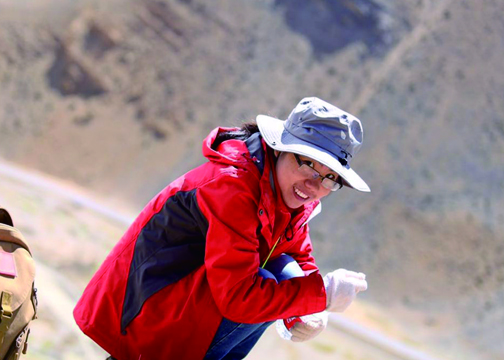Abstract
This special issue of Mesozoic is dedicated to the memory of a great specialist in carbonate sedimentology, Dr Juan Li, who passed away on July 19th, 2023. Juan Li sadly left us while logging the Paleocene-Eocene thermal maximum (PETM) interval in the Tibetan Himalaya. This special issue has collected contributions to Mesozoic–Cenozoic geological studies from the Qinghai-Tibet Plateau from colleagues, friends, and fellow scientists to express our remembrance and regret.
References
- Li, J., Hu, X., Garzanti, E., An, W. & Wang, J. (2015) Paleogene carbonate microfacies and sandstone provenance (Gamba area, South Tibet): Stratigraphic response to initial India–Asia continental collision. Journal of Asian Earth Sciences, 104, 39–54. https://doi.org/10.1016/j.jseaes.2015.02.007
- Li, J., Hu, X., Garzanti, E., Banerjee, S. & BouDagher-Fadel, M. (2020a) Late Cretaceous topographic doming caused by initial upwelling of Deccan magmas: Stratigraphic and sedimentological evidence. Geological Society of America Bulletin, 132, 835–849. https://doi.org/10.1130/B35222.1
- Li, J., Hu, X., Garzanti, E. & BouDagher-Fadel, M. (2017) Shallow-water carbonate responses to the Paleocene–Eocene thermal maximum in the Tethyan Himalaya (southern Tibet): Tectonic and climatic implications. Palaeogeography, Palaeoclimatology, Palaeoecology, 466, 153–165. https://doi.org/10.1016/j.palaeo.2016.08.020
- Li, J., Hu, X., Garzanti, E. & BouDagher-Fadel, M. (2021) Climate-driven hydrological change and carbonate platform demise induced by the Paleocene–Eocene Thermal Maximum (southern Pyrenees). Palaeogeography, Palaeoclimatology, Palaeoecology, 567, 110250. https://doi.org/10.1016/j.palaeo.2020.110250
- Li, J., Hu, X., Garzanti, E. & BouDagher-Fadel, M. (2022) Spatial heterogeneity in carbonate-platform environments and carbon isotope values across the Paleocene–Eocene thermal maximum (Tethys Himalaya, South Tibet). Global and Planetary Change, 214, 103853. https://doi.org/10.1016/j.gloplacha.2022.103853
- Li, J., Hu, X., Zachos, J. C., Garzanti, E. & BouDagher-Fadel, M. (2020b) Sea level, biotic and carbon-isotope response to the Paleocene–Eocene thermal maximum in Tibetan Himalayan platform carbonates. Global and Planetary Change, 194, 103316. https://doi.org/10.1016/j.gloplacha.2020.103316
- Li, J., Hu, X., Zhao, K., Cai, Y. & Sun, T. (2016) Paleoceanographic evolution and chronostratigraphy of the Aptian Oceanic Anoxic Event 1a (OAE1a) to oceanic red bed 1 (ORB1) in the Gorgo a Cerbara section (central Italy). Cretaceous Research, 66, 115–128. https://doi.org/10.1016/j.cretres.2016.06.004


